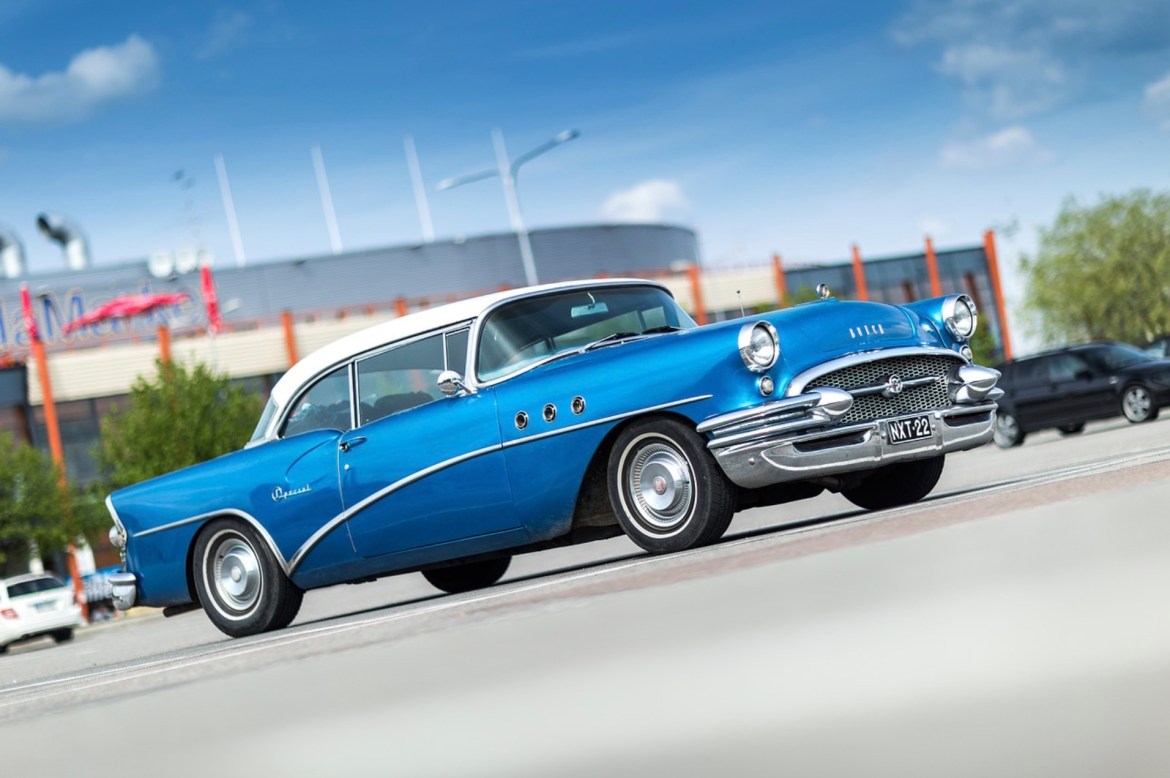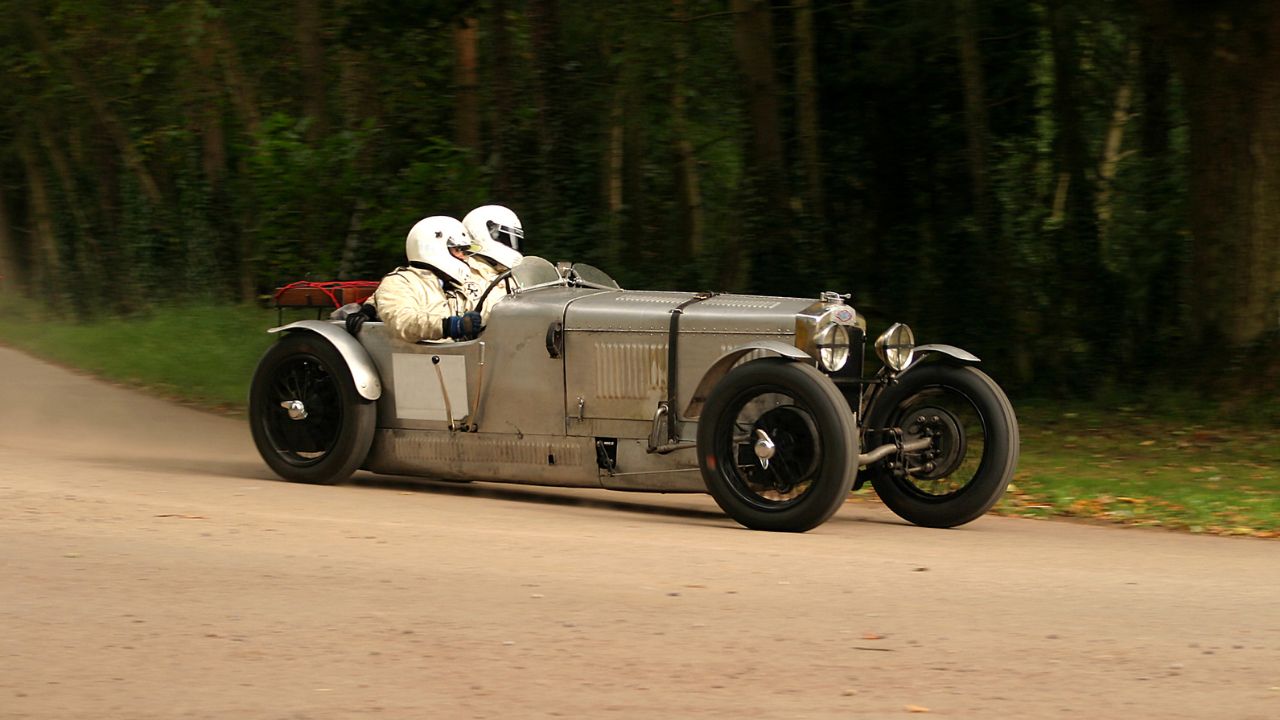
The 60s were a golden age for muscle cars, and Ford was an important player in the competition. Ford Mustang was the dominant car of the decade. The 1968 Cobra Jet, a legendary model, was also a top-selling Mustang. It was a monster with 335 horsepower and 445 lb-ft of torque. Chevrolet manufactured some of the most popular muscle cars of the decade, including its Chevrolet Camaro ZL1. This limited edition model was sold only in limited quantities. This legendary muscle car was designed by Dick Harrell and sold in a limited number.
Dodge Charger
The Dodge Charger was one of the most famous muscle cars of 1960s with a design that was considered a classic. First shown to the media in June 1967, the car had a rounded rear bumper and two round taillights. It offered a variety of engines, from a 225 cu in slant-6 to a powerful 440 cu in 'Magnum’ V8 that made 375bhp. The R/T was a more powerful Charger, with an upgraded suspension and dual tailpipes. It also featured distinctive body stripes. The Hemi Charger R/T was eventually introduced. It had more horsepower but was also more expensive.

Ford Mustang GT
If you're looking for the best of the 60s, the Ford Mustang is a perfect choice. The American muscle car was a hit among fans of the 60s and is currently the Dearborn's best selling car since the V-8 Model B motorcar of 1932. You can customize the classic car to match your style by changing the interiors and powertrain options.
Pontiac Galaxies
Ford's Galaxie line was completely redesigned for the 1964 model year. The entire model line received the Car of the Year award from Motor Trend magazine. These vehicles were everything from station wagons to luxury convertibles. The Ford Galaxie 500 model was the centerpiece of this line. It featured big V-8 engines and spacious seating for six. It also won the Car of the Decade award in 1965.
Chevrolet Impala SS
The Chevrolet Impala SS is a muscle vehicle made by General Motors. The SS was a top-of-the-line model that began production in 1959. It featured a 5.3L V8 engine and a 17-gallon gas tank. It was sold in all four color options, except Black, White, Red. The car's exterior was also modified for the 2006 model year. The luxury edition offered leather seating and folding rear seats as well as a spoiler. The SS and LT were also available in four new exterior colors and included an auxiliary input.
Pontiac Super Bee
David Freiburger is the editor-in–chief of HOT ROD magazine. He has completed extensive restorations to the Pontiac Super Bee. The car was left unaltered for 11 years before he decided to restore it for street-legal purposes. The team spent seven days prepping the car and then took it to Mopars Strip in Las Vegas where it was finally unveiled to the public.

Buick Rivera
Buick Rivera 60s' muscle car is powered by a 401-cubic inch V8 engine. It has been tested and proven to deliver incredible torque. Recent detailing has given the engine bay an elegant and clean appearance. The original Wildcat 44 decals have been removed from bright red exhaust manifold. Buick's 401 horsepower engine was powerful enough to drive it at speeds exceeding 100 mph.
FAQ
What is the job description for a mechanic in a car?
There are three main areas of employment for car mechanics:
-
Automotive repair shops
-
Dealerships
-
Independent garages
Automotive repair shops
This is where most people first think of becoming a mechanic. It's the easiest way for most people to get started. You can either work in a shop run by someone else, or start your business.
If you plan to work in a shop, you must apply to join the union. After you are accepted to the union, you will receive training from it.
After the training, you will be ready to go and start your job.
Registering with the government is required if you intend to open a garage. After you have registered, you will need to meet certain standards.
You will receive a license to run your garage once you have registered.
You can sell spare parts or do minor repairs with your license. It will not permit you to fix major engine issues.
Apart from selling spare parts, customers will also expect you to provide guidance and advice.
Dealership jobs
Most dealerships only employ mechanics who have a specific skill set. They might specialize in one area, such as brakes and tires.
Some dealers also have general mechanics that can handle all aspects.
These positions often require applicants to undergo specific training before being allowed to work. Employers are able to choose which candidates will best suit their position.
Some dealerships will hire graduates straight from college. These graduates are already familiar with basic mechanics and can therefore learn about cars.
Independent garages
Independent garages aren't associated with any particular dealership. Instead, independent garages tend to concentrate on providing high-quality services.
Independent garages are not associated with any companies so they can afford higher wages. Because these jobs don't have to be associated with any company, they can generally offer better wages than dealerships.
However, independent garages may not be better places to work. Many business owners prefer to manage their own businesses rather than delegating responsibility to others.
This could lead to you working long hours with little control over your day.
Also, expect to make lower wages than if your job was at a dealership.
There are many jobs that can be switched between. It is possible to switch between different types of jobs if your current employer would prefer you to work at a dealer.
If you prefer to work in an independent garage, you might consider applying directly to its owner.
The bad news? Finding a new position isn't always easy. You can earn more depending on many other factors.
For example, the type of vehicle you repair and whether you charge extra for labor.
Is it worth becoming a mechanic?
The answer depends on what you are looking for in life. If money is your goal, then you can answer "yes". But if you are searching for meaning and purpose, then you should not answer this question.
You don't need to be a mechanic if you don't know how. It's not going make you millionaire. It won't make your name famous. It is unlikely that you will be made famous.
This would require you to spend many years learning how to properly do everything. Then you'd still have to pay someone else to fix your car when it breaks down. Most people won't bother to do it. They find something else to do.
You can make a lot of money if you are looking to do well. The mechanic's profession is not the right place for you if it means that you will live a fulfilled life.
What length is an automotive mechanic apprenticeship?
A three-year apprenticeship in automotive mechanics takes. This includes two year at school as well as two years as an apprenticeship. The first year is used to learn all aspects of the trade including safety procedures and theory. During this time, you'll also learn how to use tools safely and efficiently. After you have completed the first year of training, you will be able to spend an additional year on-the job learning different trades. You will have the opportunity for formal training during these years.
The final year is dedicated to earning certifications and qualifications in the field. These include NVQs (National Vocational Qualifications), that are given after passing specific industry exams. You can also get HNCs (Higher National Certificates), that cover subjects such as customer service, business administration, management, and business administration. Finally, there are City & Guilds certificates that are offered for those who wish to become qualified in certain trades.
Is it easy to get a job as an automotive mechanic?
It can be done. Garages often advertise their jobs online and people just apply because it seems fun. Try applying to a few jobs and seeing if the garages accept student applications. Another option is to ask family members and friends if anyone works in this industry. They may be happy to recommend someone.
Statistics
- There were 749,900 jobs available for automotive service technicians and mechanics in 2016, which is expected to grow by six percent through 2026. (jobhero.com)
- According to the BLS, total auto technician employment is expected to exceed 705,000 by 2030. (uti.edu)
- 52% of Mechanics in the United States think their salaries are enough for the cost of living in their area. (indeed.com)
External Links
How To
How to diagnose your vehicle properly for repair
First, look at the symptoms of your car to determine if it needs repair. These steps will help you diagnose your car properly.
-
Check engine lights. The dashboard light indicators, including the engine light, oil pressure gauge, battery light indicator, coolant temperature gauge and RPM gauge, should be checked. It could indicate that your vehicle is having problems.
-
Examine the treads of the tires. If the tires are worn out, they could cause problems with handling and braking. Also, inspect the treads of your wheels. They should be clean, and they should be smooth. It is best to take off the wheels and remove them. You can check the tread wear with a flashlight.
-
Observe the brake fluid level. You must always monitor the level of your brake fluid. This helps ensure that your brakes operate properly. Low brake fluid levels can cause brake failure when you apply pressure.
-
You should test the suspension system. Most vehicles have a suspension system that absorbs shocks and vibrations. It gives you better control and allows for smoother accelerations and decelerations. A suspension problem can cause your vehicle to feel wobbly and shake uncontrollably. To determine whether your vehicle may have a suspension issue, you can try to put weight on the rear or front axle and watch the movement.
-
Examine the steering wheel. The steering columns are what connect the steering knob to the rest. Many accidents can cause damage to steering columns. You should replace your steering column if it feels loose or unstable.
-
Observe the exhaust pipe. Exhaust pipes move gases from combustion chamber to atmosphere. Exhaust pipes that are cracked or leaking can allow harmful fumes to enter your cabin. Also, if your tailpipe is bent, you should fix it immediately.
-
Look under your hood. Look underneath your hood to see if anything looks strange. You could have fluids leaking from the engine. You should also contact a professional technician if there is an unusual odor coming from the engine compartment.
-
Check the air filter. Your vehicle's air filter collects dust and debris from the outside environment. Your vehicle will run less well if it has a dirty filter. Replace your air filter regularly.
-
Check the fan belt. Your vehicle's fanbel connects the engine and transmission. If the fanbel breaks, your engine won't turn. It is very easy to replace your belt. You only need a screwdriver or pliers to replace your belt.
-
Verify the radiator hoses. The radiatorhose carries water from your radiator to the engine. It can cause hot liquid to leak onto the engine if it is damaged or cracked. To repair the hose, you will only need to use a pair needle-nosepliers and a wire brush.
-
The windshield wipers should be checked. Windshield wipers use electricity for snow and rain removal. If they stop functioning, they can leave streaks in your window glass. You can fix the problem by changing the washer fluid.
-
Verify the condition of your battery cables. The battery cables provide power for the electrical systems in your car. If you are replacing batteries, disconnect the negative cord first. Failure to do so can damage your alternator.
-
Check the headlights. Headlights illuminate the road ahead of you. It can lead to poor visibility if they aren't working properly. To determine if your bulbs are out of date, check them.
-
Be sure to check the lights. The lights are there to warn other drivers if they approach you at night. If one doesn't work, it could distract you and lead to an accident.
-
Make sure you check your brakes. Before you get in a car accident, your brakes will be slowing down your vehicle. If they aren't working correctly, you could lose control of your car and crash.
-
Change the oil. Your engine will stay lubricated by the oil. It protects metal parts and prevents them from wearing too quickly. It is recommended that the oil be changed every other month.